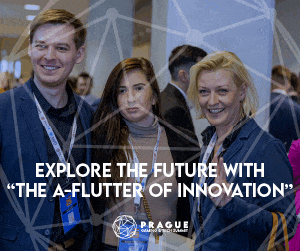Welcome to AI Dispatch, your daily deep dive into the world of artificial intelligence—with expert analysis, opinionated commentary, and the critical trends you need to know. Today’s briefing (July 7, 2025) focuses on five major announcements shaping the AI landscape:
-
Groq launches its first European data center
-
Huawei defends its home‑grown AI models amid whistle‑blower scrutiny
-
Ukrainian startup Shtuchnyi secures fresh funding for industrial computer vision
-
Elekta and Gray partner on optimized oncology scheduling with AI
-
Cambridge Judge Business School and Emeritus unveil a new AI leadership program
Read on for concise yet detailed coverage, expert insights, and SEO‑driven analysis—no external links, just the facts and commentary you need.
1. Groq Launches First European Data Center
What Happened:
On July 4, 2025, AI‑chip innovator Groq officially opened its inaugural European data center in Amsterdam, marking a major step in its global expansion. Equipped with Groq’s proprietary tensor‑streaming architecture, the facility offers ultra‑low latency inferencing for large‑scale machine‑learning workloads.
Key Details:
-
Location & Capacity: The Amsterdam hub spans 10,000 m², hosting over 2,000 GroqCards capable of 2 exa‑operations per second aggregate throughput.
-
Performance Gains: Customers report 5× faster inference on transformer‑based models compared to GPU‑only deployments, ideal for real‑time analytics, autonomous systems, and high‑frequency trading.
-
Partnerships: Groq has inked reseller agreements with major European cloud providers and system integrators to bundle its acceleration hardware with managed AI services.
Opinion: This expansion underscores a critical market shift—enterprises can no longer tolerate the latency and power inefficiencies of legacy GPU infrastructure. Groq’s focus on deterministic performance positions it as a frontrunner in “AI at the edge” and latency‑sensitive applications. Expect incumbents like NVIDIA and AMD to respond aggressively, driving further innovation in chip‑level architectures.
Source: Yahoo Finance
2. Huawei Defends Home‑Grown AI Models
What Happened:
Following whistle‑blower allegations that questioned the robustness and safety of certain Qingyun AI model variants, Huawei issued a comprehensive defense of its in‑house AI research and development processes.
Key Details:
-
Model Audit: Huawei reported completing internal audits of its flagship Pangu‑E and Wenxin families, demonstrating compliance with industry best practices for data provenance, bias mitigation, and adversarial‑testing.
-
Transparency Pledge: The company will open select model weights and evaluation benchmarks to third‑party reviewers later this quarter.
-
Strategic Focus: Despite external skepticism, Huawei remains committed to coupling next‑generation AI with its HarmonyOS ecosystem, targeting smart‑city, manufacturing, and 5G‑powered IoT use cases.
Opinion: Huawei’s proactive stance suggests a broader industry trend: as AI systems become integral to critical infrastructure, leading players must embrace transparency and rigorous testing protocols. Whether this restores confidence will depend on Huawei’s willingness to engage with independent researchers and publish verifiable results.
Source: South China Morning Post
3. Shtuchnyi’s Vision: AI‑Powered Industrial Inspection
What Happened:
Kyiv‑based startup Shtuchnyi announced a successful Series A round of USD 15 million, led by East‑West Digital News Ventures, to scale its computer‑vision platform for manufacturing defect detection.
Key Details:
-
Technology: Leveraging multi‑spectral cameras and deep‑learning segmentation, Shtuchnyi automates visual QA tasks—identifying weld flaws, surface cracks, and misalignments in real time.
-
Go‑to‑Market: Pilot deployments across automotive and aerospace clients have demonstrated a 30 percent reduction in inspection times and a 20 percent drop in false positives.
-
Expansion Plans: The funds will accelerate R&D on 3D‑scan integration and expand sales operations into Western Europe and North America.
Opinion: Industrial AI remains a sleeper segment—less flashy than generative chatbots but arguably more mission‑critical. Shtuchnyi’s traction highlights the untapped potential of verticalized vision platforms. As manufacturers lean into Industry 4.0, demand for turnkey, high‑precision inspection solutions will surge.
Source: DEV.UA
4. Elekta & Gray: AI‑Optimized Oncology Scheduling
What Happened:
Medical‑technology leaders Elekta and Gray Healthcare announced a strategic partnership to integrate AI‑driven appointment‑scheduling capabilities into Elekta One OIS (Oncology Information System).
Key Details:
-
Optimization Engine: Gray’s machine‑learning algorithms analyze patient complexity, resource availability, and treatment protocols to minimize wait times and maximize machine utilization.
-
Clinical Impact: Early beta tests in four European cancer centers yielded a 15 percent reduction in average patient wait times and a 10 percent increase in linear accelerator usage rates.
-
Regulatory Clearance: Both companies are working with health authorities to ensure the scheduling tool meets GDPR, HIPAA, and MDR standards.
Opinion: Healthcare AI often stumbles on integration hurdles and data‑privacy concerns. By embedding smart scheduling directly into an existing clinical workflow, Elekta and Gray demonstrate a pragmatic approach—one that could become a blueprint for AI adoption across hospital operations beyond oncology.
Source: PR Newswire / Elekta & Gray Partnership
5. Cambridge Judge & Emeritus: AI Leadership Programme
What Happened:
The Cambridge Judge Business School has teamed up with Emeritus to launch an executive education program—AI Leadership: Strategies for Global Impact—targeted at C‑suite and senior managers.
Key Details:
-
Curriculum: Over 12 weeks, participants explore AI strategy, ethics, governance, and scaling AI across functions, with case studies from multinational firms like Unilever and Goldman Sachs.
-
Delivery Model: A hybrid model combines asynchronous coursework, live virtual workshops, and an in‑residence capstone at the Cambridge Judge campus.
-
Enrollment: The inaugural cohort commences on September 15, 2025, limited to 50 executives worldwide.
Opinion: As organizations grapple with AI’s strategic and ethical implications, demand for tailored leadership programs is skyrocketing. Cambridge Judge’s collaboration with Emeritus signals that academic institutions are pivoting from theory to actionable, hands‑on training—essential for bridging the AI skills gap at the board level.
Source: PR Newswire / Cambridge Judge & Emeritus Collaboration
Emerging Themes & Strategic Takeaways
-
Edge & Performance: Groq’s Amsterdam data center highlights the relentless drive for lower latency and higher throughput in AI inferencing.
-
Transparency & Trust: Huawei’s model audit underscores that as AI permeates critical sectors, vendors must prioritize openness and third‑party validation.
-
Verticalization: Startups like Shtuchnyi demonstrate that domain‑specific AI solutions—especially in manufacturing—can deliver immediate ROI.
-
Operational AI: Elekta and Gray’s scheduling tool exemplifies how AI can optimize complex, regulated workflows in healthcare.
-
AI Leadership: Cambridge Judge’s program responds to an urgent need: equipping executives to formulate responsible, impactful AI strategies.
Conclusion
Today’s AI Dispatch spotlights a clear pattern: success in the AI era demands specialization, transparency, and seamless integration into existing ecosystems. From chip design and data‑center geography to model governance, industrial vision, and executive training, the industry is converging on solutions that balance innovation with accountability. Stay tuned to AI Dispatch for tomorrow’s insights—because AI’s rapid evolution waits for no one.
















Got a Questions?
Find us on Socials or Contact us and we’ll get back to you as soon as possible.